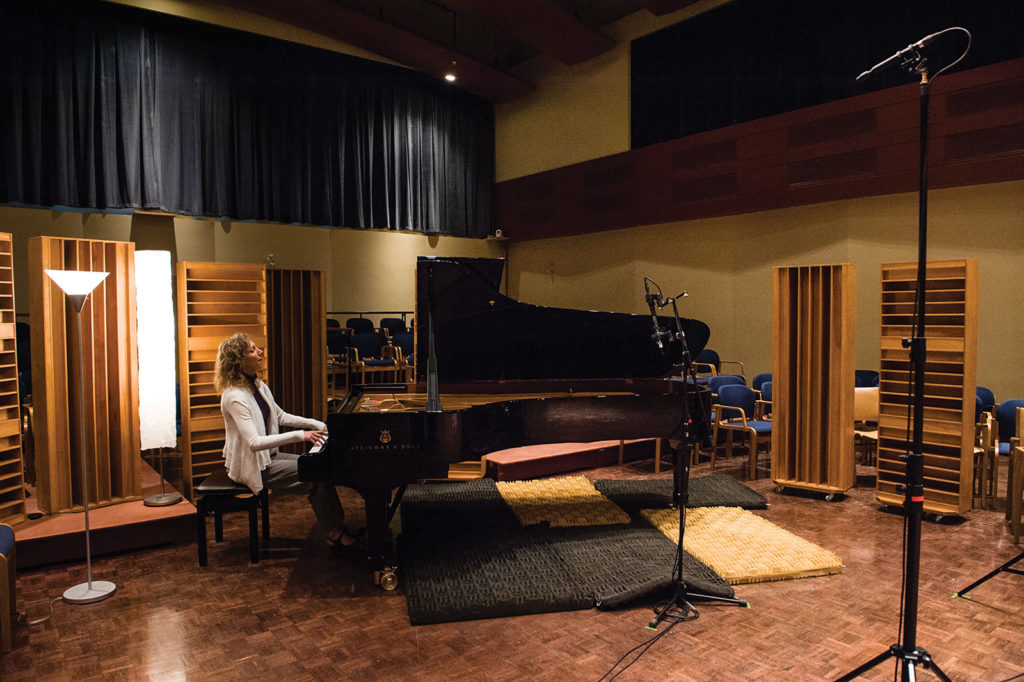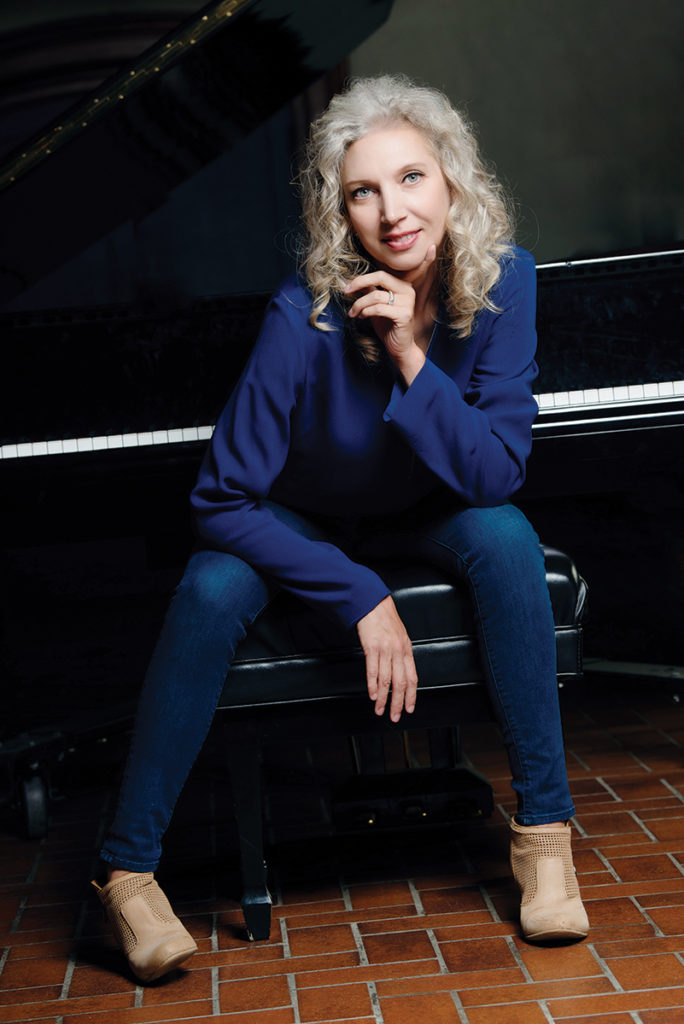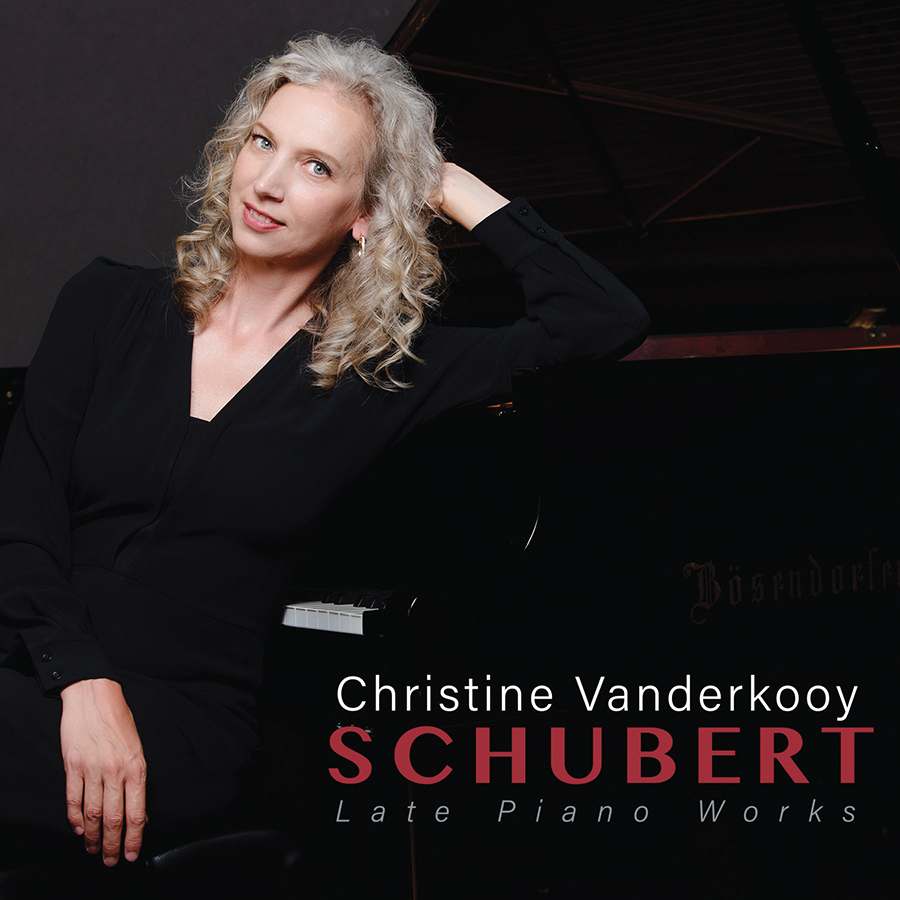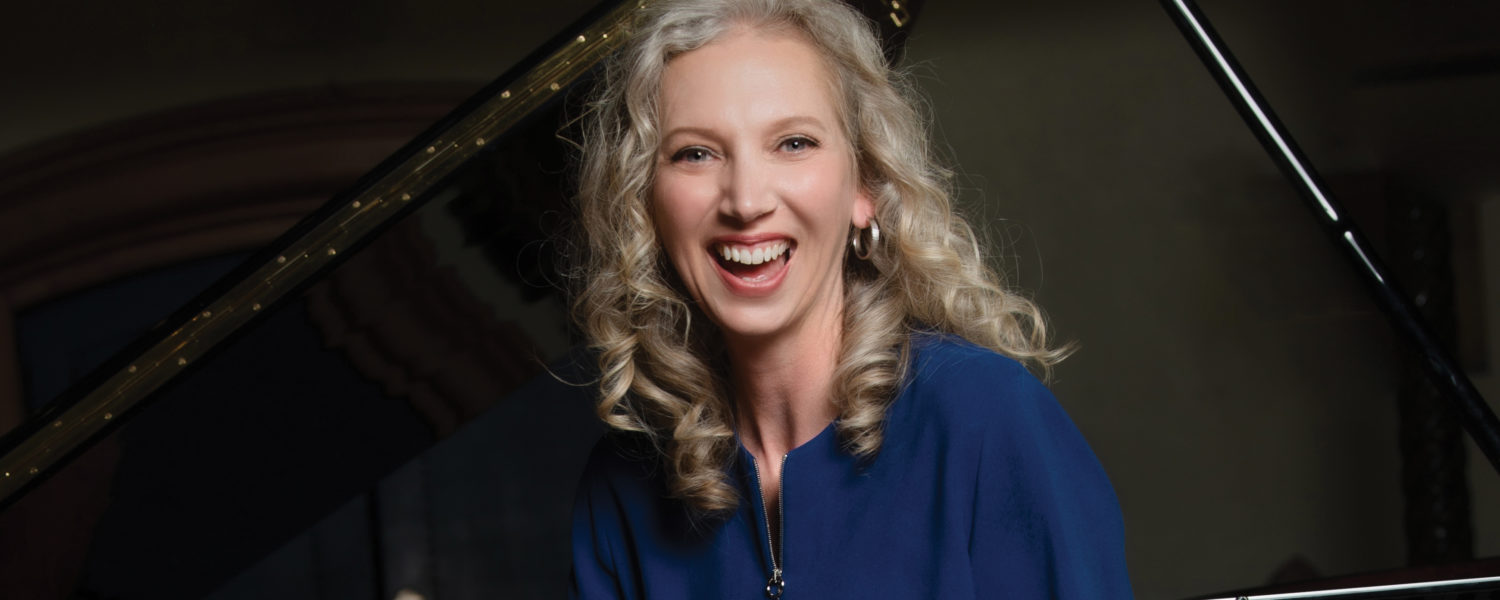A Pianist’s Tale on How to Truly Listen
To the Intentions Behind Music
Story by Alley L. Biniarz
Photography by bohuang.ca
To speak with pianist Christine Vanderkooy is to immediately feel her love of music radiating from her being. The artist has recently released her second recorded album, Schubert: Late Piano Works distributed by Leaf Music Distribution, and shares with us the process of what it took to record music over the last few years, what it takes to be a musician, and the journey that led her here.
Christine began taking piano lessons at a young age. “My parents recall the story and apparently I expected to play all over the keyboard after my first lesson,” she laughs. “With my two thumbs stuck on middle C, they figured they should give it a couple of years before we tried again.” She started back up at age eight, which in hindsight is late for kids to begin an instrument.

“Now I wasn’t always keen to sit at the piano,” she recounts. “My mom tells the story that she had to get out the egg timer during practice.” Like most children, Christine needed a little nudge to keep at it, but eventually the piano became part of the fabric of her being.
“I feel in a way like my vocation chose me,” Christine shares about her decision to study music. Christine’s musical journey took her to complete her undergraduate degree at Wilfrid Laurier University and a doctorate in Piano Performance at McGill University, where she took a look at the careers around her and what would be possible with a degree in music. As much as she loved performing, she wanted more stability than performing could offer. Looking at her devoted professors, it quickly became clear to her that she also wanted to teach music.
“I have always been passionate about teaching as a natural extension of the wonderful teaching I have received. I’ve been so fortunate in my life to have teachers whose love of music and ability to share profound insights into its inner workings have shaped my relationship with the piano,” she says.
Christine feels privileged to be in her current position with the University of Windsor. “I increasingly feel the importance of carrying on the great traditions of pedagogy I have been privileged to be a part of and to honour my teachers’ profound legacies of shaping musicians and shaping lives.” She is also grateful for the autonomy that this career offers her; Christine is able to work at her own pace, allowing her the flexibility to be with her children while
also maintaining a life at the piano. Through her career, Christine has also performed as a soloist with the Windsor Symphony as well as across Canada, the US and Europe.

Her first recorded album took place in 2014 with this second coming to fruition in 2020 when concerts were canceled. Christine’s recording took place at the Glenn Gould Studio in Toronto where she had the absolute honour of playing on “Bertha”, a nine-foot New York Steinway. “It was dead quiet. The streets were empty, which was an extraordinarily eerie and magical time. I was alone in the big hall, where it was just me and the music,” she shares more about the process.
Christine met her producer Mark Willsher when they were students at the BANFF Centre for the Arts. She knew when she was looking to record music that her art would be safe in Mark’s capable hands. Christine describes Mark as focused, relaxed, knows what needs to be covered and is easy to play for and play with. “With every take, he wants you to reach as deeply as you can and bring forth the best music you can reach for,” she says.
They had worked on her first album together, and even after his move to London, England, and his impressive career as the music editor for Lord of the Rings and Downton Abbey, he agreed to be a part of this second album. “It was amazing because they could have him there listening to the music in real time from his studio in London. The laptop was on the stage over my shoulder, and he was closer than he could have been if he had been in the production booth. It was like having him in the room with me; it was extraordinary!”
Christine began recording Schubert’s late works, which she says were some of his most sophisticated, poetic and deeply felt works for the piano. She has always loved Schubert but was drawn to these late works in particular, as if he knew that he was dying and couldn’t hold anything back. She explains that this album came from these final moments of his life when he was getting ill and just wrote prolifically. “There’s something about that, where the artist has one foot in the afterlife. In a way it’s like they’re communicating from that place.”
She adds that what made these works especially exciting to play is that everything is there within the works – all the experiences that can be felt in a single lifespan. “The joys and tribulations. Thrills and angst. The meditation, all of it. It’s all there—the full palette of our emotional world for the taking.”
That’s the beauty of the piano, Christine emphasizes, that it’s so capable of expressing these intricate colours, changes in voices and that it can take you from this moment of great joy to a moment of profound sadness (or vice versa) on a dime. Just a change of one chord can take your breath away.
This is one of the main elements that drew Christine to piano performance in the first place: this ability to communicate more effectively through the instrument. She loves how she’s able to explore all of the parts of herself through the piano’s sounds and feels like this form of communication has become a natural extension of who she is.
There’s a kind of thrill to capture this feeling for an audience, Christine shares. “To feel like you are sharing in this moment together, and that you, the pianist, get to lead that moment.” As terrifying and nerve-wracking as performing can be, it’s something that has always been that perfect fit for Christine. “It’s addictive, this communication with an audience. That’s what takes it all away.”

The best moments are the ones she gets lost in, Christine adds, where she’s lost in the moment and all her self-consciousness drops away. “When it’s over, you realize you’ve been in another world. And if one is lucky enough to have it happen, where it all comes together: the preparation, the mindset, the audience, the instrument and the venue for that very moment to happen, well that’s the magic. That’s why people put in the work. You just hope that you can get out of your own way and let the music speak for itself.”
That’s what Christine hopes for when people listen to this album: for all of the daily distractions and activities to melt away and for listeners to be left alone with the music. Every listener has their own experience with the music; Christine says the music will find you exactly in the moment that you’re in.
“Music is a gift. We get so distracted and life can keep us on the surface and busy in it. Take this opportunity to sit with your inner world for a bit. Take a few moments to sit and listen and see what comes to you. See what the intention of sitting and listening will offer you.”
Christine’s music can be found anywhere you like to listen to your music: iTunes Store, Apple Music, Amazon Music, Tidal, Spotify or you can pick up a CD locally from Biblioasis, Dr. Disc or Galaxy Records.




Add comment